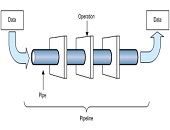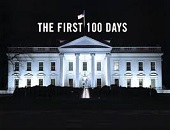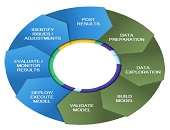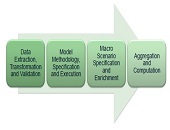Machine learning sniffs out corruption
“Bribery and corruption are by-products of risk culture,” said Aparna Gupta, Associate Professor at Lally School of Management at Rensselaer Polytechnic Institute. “We can take a step back and devise methods to detect it using textual data and machine learning.” Gupta was the second of two speakers at the one-hour webinar “Corruption and Corporate Governance” sponsored by the Global Association of Risk Professionals (GARP) on October 30, 2019. Since culture is intangible, empirical work on the relation between risk culture and risk management is limited. Traditional approaches for assessing risk culture have many drawbacks such as bias and lack of comparability. Nonetheless, […]
The Data Pipeline
The new guidelines on credit impairment at U.S. banks regulate the estimation and reporting of the current expected credit loss (CECL). But what are they really about? “CECL is all about setting up a data pipeline,” said Krish Ray, CECL Implementation Lead at SAS. He was the second of three speakers at a webinar panel titled “CECL: Managing Through the Implementation Headwinds” sponsored by the Global Association of Risk Professionals (GARP) on September 12, 2018. Ray categorized the key challenges of CECL implementation as: models, data, business, governance, and sustainability. Smaller banks might lack modelling expertise and “may have to turn to vendor models.” […]
A Moving Target
When it comes to changing the Dodd-Frank Act (DFA), the new Trump administration “may find repeal and replace is not really a good strategy,” said Tim McTaggart, partner at Stinson Leonard Street, LLP. He was the second of two presenters during the webinar on planned changes to the Dodd-Frank Act, April 27, 2017, timed to coincide with the 100th day since Donald Trump became U.S. president. The webinar was sponsored by the Global Association of Risk Professionals. The changes could involve a reconfiguration or readjustment of the regulatory process, coupled with “some really interesting personnel appointments,” McTaggart said. It’s a […]
The First 100 Days
In the first 100 days of the Trump presidency, has financial risk increased, decreased, or stayed the same? “One of the key platforms of the Trump administration was a promise to dismantle the Dodd-Frank Act,” said Candice Nonas, managing consultant at Resources Global Professionals. “What will be the impact of repeal on consumer protection?” She was one of two presenters during the one-hour webinar sponsored by the Global Association of Risk Professionals on April 27, 2017, which is the 100th day since Donald Trump became U.S. president. Nonas noted that the Dodd-Frank Act is actually an amalgam of several pieces […]
Platform of the Future
What will be the ideal modelling platform of future bankers? It will need to contain key functionalities in model execution, scenario management, and a “risk engine” that will deliver answers for multiple horizons at the loan level. Furthermore, it should implement the most advanced modelling suites, reduce the quants’ time to develop models, and contain simulation capabilities for stress testing and beyond. This bold vision of the future was presented by Martim Rocha, Advisory Business Solution Manager at SAS. He was the second of two presenters at the February 25, 2016, webinar offered by the Global Association of Risk Professionals […]
Four Lessons from Stress Testing Exercise
“It very quickly became apparent that this was not a one- or two-month exercise,” said Charyn Faenza, Vice President, Manager of Corporate Business Intelligence Systems at First National Bank, the largest subsidiary of the largest subsidiary of FNB Corporation. She was the second of two presenters at the May 19, 2015, webinar on Stress Testing Modeling sponsored by the Global Association of Risk Professionals. Faenza was referring to her bank’s experience as an example of a “DFAST 10-50” bank that is required to conduct an annual stress test. She drew four important lessons from the exercise. Good Modeling Requires Good […]
“Not Only The What But The How”
When it comes to financial data for stress testing, there’s a good news-bad news aspect. The good news may be that a bank did not suffer severe financial stress but the bad news is that it will be harder for the bank to model “bad events” if it does not have such data. And banks “will get written up if [the regulators] don’t believe their bad events,” said Tara Heusé Skinner, Manager at SAS Risk Research & Quantitative Solutions, and co-author of The Bank Executive’s Guide to Enterprise Risk Management. She was the first presenter of two at the May […]
Swaps, Before & After
“Historically, there were few, if any, regulatory requirements on swaps … it was effectively an unsecured loan,” said James Schwartz, Of Counsel at Morrison & Foerster. He was the fourth and final presenter at the Derivatives Regulatory Update webinar held on March 31, 2015, sponsored by the Global Association of Risk Professionals. Prior to the Dodd-Frank Act, swaps dealers were self-regulated through the trade association International Swaps and Derivatives Association (ISDA). “It was typical for the two parties to accept a certain amount of uncollateralized exposure to each other in the form of a threshold that varied according to their […]
Update on Central Clearing
One of the goals of the Dodd-Frank Act is to mitigate systemic financial risk by establishing a central clearinghouse for derivatives. But how close is the financial community toward achieving that goal? “Many swaps were not collateralized prior to Dodd-Frank,” said Julian E. Hammar, Of Counsel at Morrison & Foerster. Hammar was the third of four presenters at the Derivatives Regulatory Update webinar held on March 31, 2015, sponsored by the Global Association of Risk Professionals. Clearing swaps mitigates risk not just through requiring margin collateral (and thereby reducing) credit risk. It also imposes an “operational discipline” Hammar said, with […]
“Skin in the Game”
What safeguards should be in place, to minimize the risks posed by financial derivatives? CME Group requires that its Clearing Members support the risk of their portfolios by “putting some skin in the game,” said Jason Silverstein, Executive Director and Associate General Counsel of CME Group, a body that includes the Chicago Mercantile Exchange and the New York Mercantile Exchange among its subsidiaries. “It’s a story of balancing incentives, in order to stabilize losses. Our belief is that it should be significant and risk-based.” Silverstein was the second of four presenters at a webinar titled Derivatives Regulatory Update held on […]










